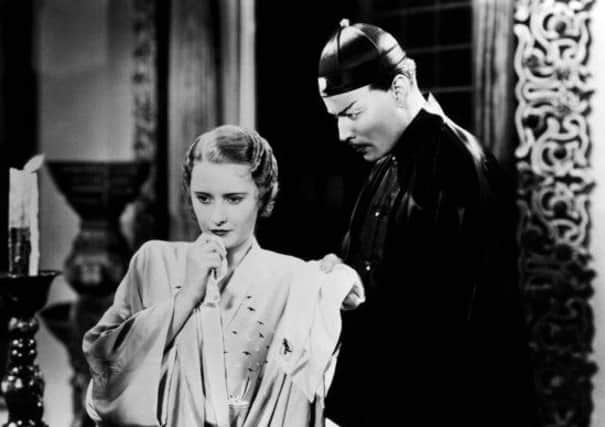Book review: Barbara Stanwyck by Victoria Wilson


BARBARA STANWYCK
VICTORIA WILSON
Simon & Schuster, 1056pp, £30
Stanwyck’s was a fascinating life nonetheless. She knew the leading directors, writers, actors, studio chiefs and Broadway impresarios of her day, along with people as varied as Annie Oakley, Clark Gable and Zeppo Marx. And each of her two marriages, to the vaudeville maestro Frank Fay and the pretty-boy heartthrob Robert Taylor, could fill a book alone.
So could the rough-and-tumble Brooklyn childhood of Ruby Stevens, the name by which Stanwyck is known for the first 80 pages of this biography. When her mother died of septicemia and her father walked out on the family, the two youngest children, Malcolm and Ruby (then four), were sent to live with foster parents. Raped by an in-law and left barren after a teenage abortion, the young Ruby set her sights on following her vaudeville star sister Millie into showbiz.
Advertisement
Hide AdShe became a chorus girl in the New York of the Roaring Twenties and learnt many tricks of that trade. She tried to teach her friend Mae Clarke (later famous for having a grapefruit shoved into her face by James Cagney in The Public Enemy) how to nudge a boyfriend into buying her a coat. An even bigger hustler in these early pages is Lucille LeSueur – known to millions more as Joan Crawford – whose tactics supposedly included spilling water on her date’s lap and then wiping it up attentively.
When a stirring Broadway performance in The Noose catapulted her to fame and to the Stanwyck stage name – and all those subsequent roles as a tomboy street-fighter and scourge of phonies – her luck with men did not much improve. She fell for Fay, whose rapier wit, expert timing and “effeminate saunter” greatly influenced the young Jack Benny, George Burns and Milton Berle. Fay was a terrible husband, exhibiting every severe symptom of alcoholism and cruelty imaginable. (On one occasion he nearly set fire to the bedroom of the couple’s adopted son. On another he threw the boy into a swimming pool.) It’s hard to fathom Stanwyck’s extreme loyalty to the man who became her captor and who hitched his career to hers in ways that hurt them both. Yet Stanwyck, with a blind obeisance that hardly reflects her screen roles, always insisted on being called Mrs Frank Fay: these days it’s hard to understand why one of Hollywood’s toughest broads identified herself as a demure home-maker.
Her romance with Taylor changed all that, perhaps because she was the older and less beautiful of the two and he was so wildly in demand. They had a horse ranch but also became celebrities, with Taylor crediting Stanwyck for teaching him much of what he knew about acting and the fame game. Remarkably, when he prepared to star opposite Garbo in Camille, Stanwyck acted the leading man’s role at home and taught Taylor how to play it.
This book carries Stanwyck from the early, uncensored days of talkies into the era of Hays Office censorious bullying. It describes how she evolved from an emotion-wringing actress into a sullen, bad-girl bombshell into Stella Dallas, arguably the most soapily self-sacrificing mother ever seen on camera. Wilson provides plot summaries of every Stanwyck film up to 1940, and the synopses are highly revealing of their era’s sexual and racial attitudes (check out the “Oriental” demon in Frank Capra’s The Bitter Tea of General Yen).
This book leaves Stanwyck reunited with Capra, with war raging in Europe, as they prepare to make what was later called Meet John Doe. Taylor and Stawyck are married, thanks to public pressure on unmarried Hollywood lovers, but his glory days are waning. The battle-scarred Stanwyck persona is fully formed, ready for much more mileage. Regarding Wilson’s next volume, no studio’s publicity department could offer a better set of coming attractions.